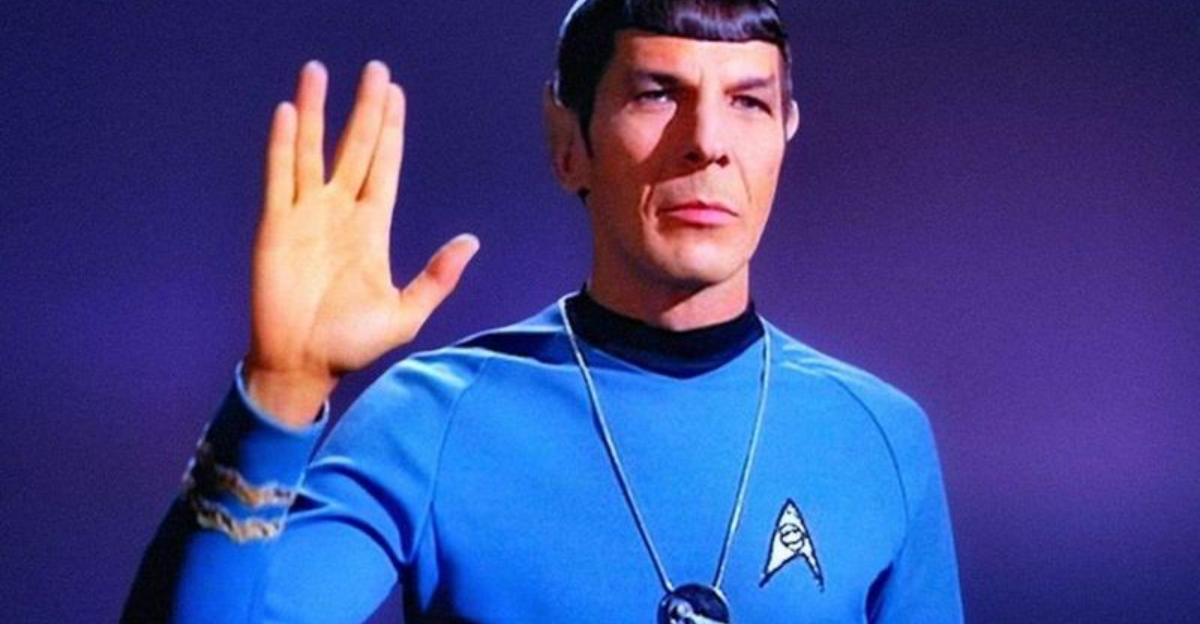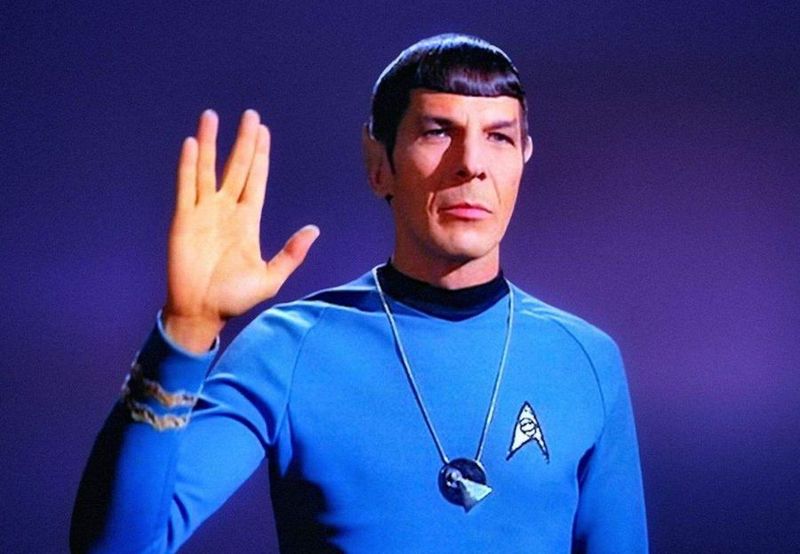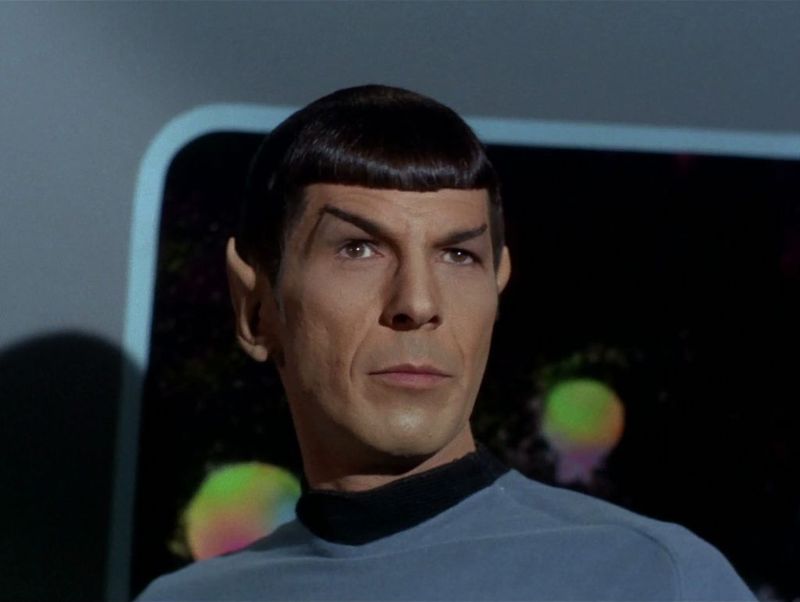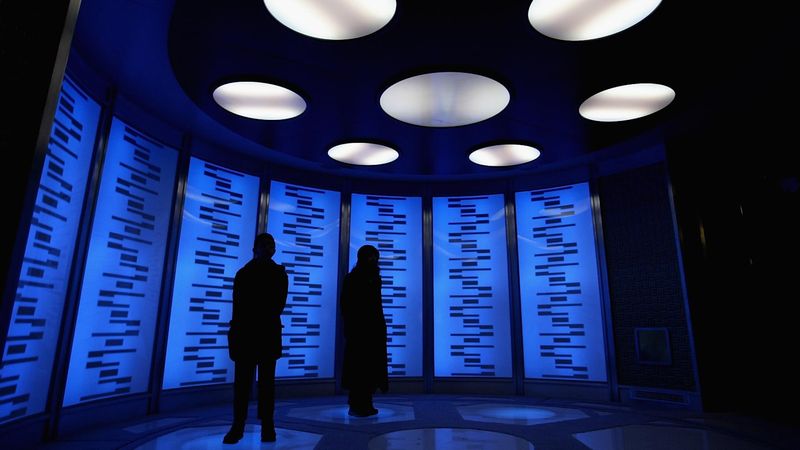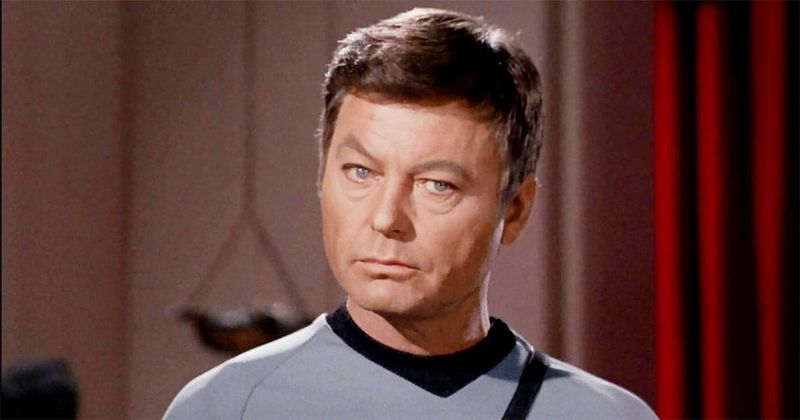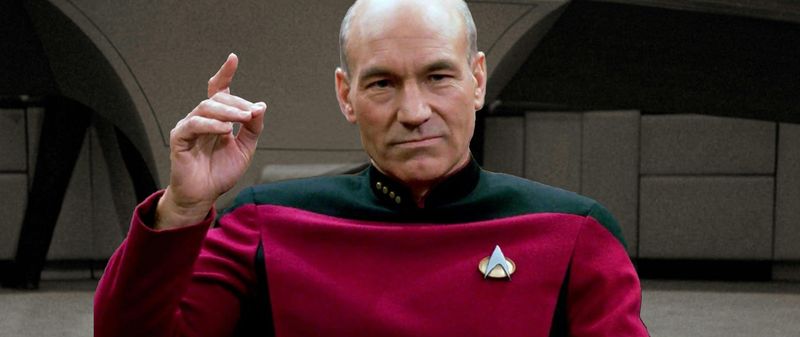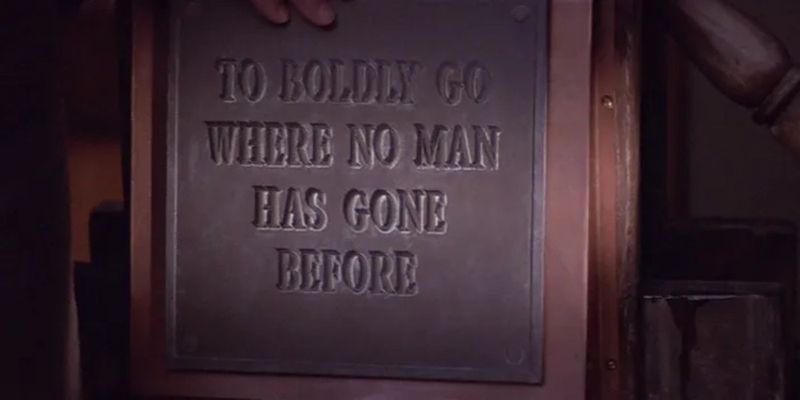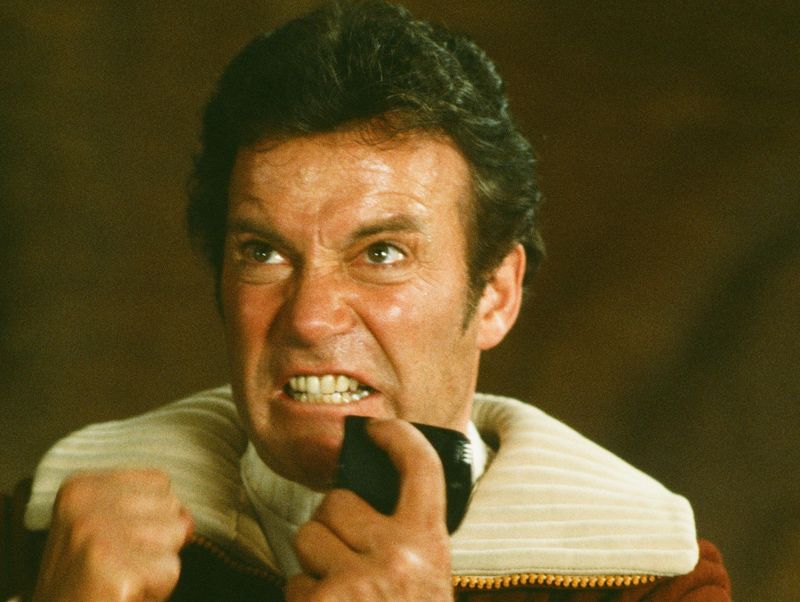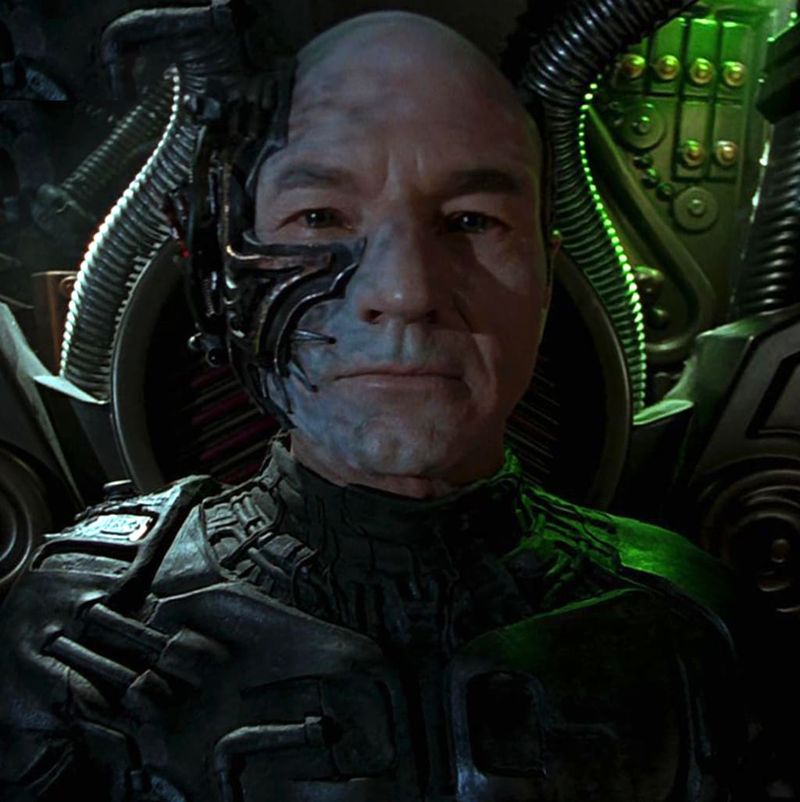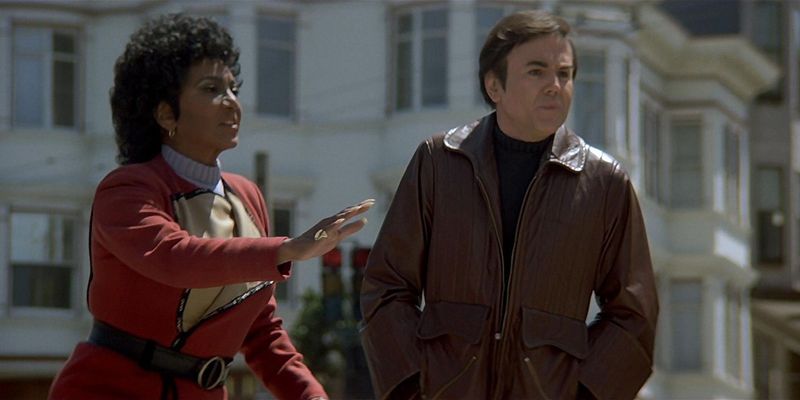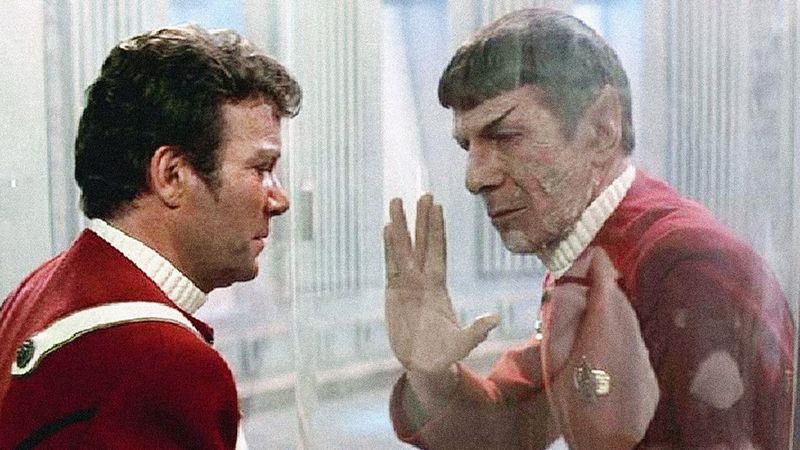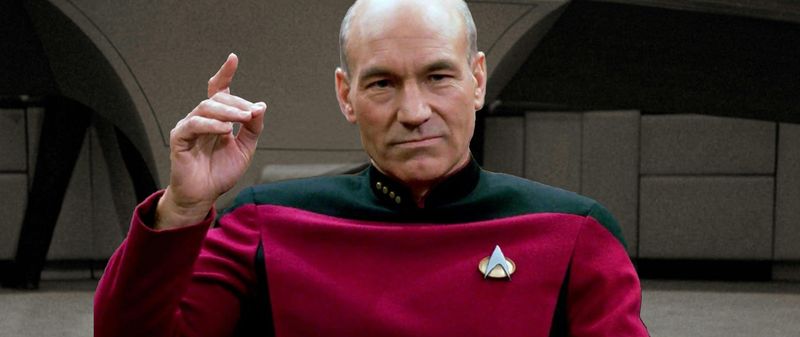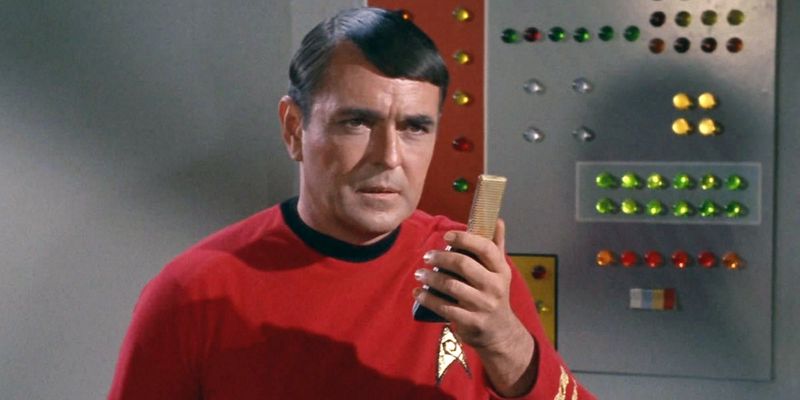Star Trek has given us some of the most memorable lines in TV and movie history. These phrases have jumped from sci-fi screens into our everyday language, showing just how deeply the series has influenced our culture. From Vulcan greetings to engineering emergencies, the stories behind these iconic lines are often as fascinating as the show itself.
1. The Vulcan Hand Gesture Behind “Live Long and Prosper”
Leonard Nimoy created Spock’s iconic Vulcan salute from childhood memories. As a young boy in an Orthodox Jewish synagogue, he witnessed priests performing a blessing where their hands formed the Hebrew letter Shin (ש), representing the divine presence.
Years later, when filming the 1967 episode “Amok Time,” Nimoy suggested this distinctive hand position to director Joseph Pevney as a Vulcan greeting. The split-finger gesture proved challenging for many cast members to replicate.
Nimoy paired it with “Live long and prosper,” creating a cultural touchstone that transcended the show and became one of the most recognizable symbols in science fiction history.
2. Spock’s Signature “Highly Illogical” Response
Spock’s famous phrase evolved gradually throughout The Original Series. While fans remember “highly illogical” as his constant refrain, the exact wording varied in early episodes, with milder versions like “most illogical” appearing first.
The full “highly illogical” declaration made its memorable debut during Season 2’s “The Omega Glory” when Spock reacted to aliens attacking Captain Kirk. Nimoy’s deadpan delivery, with one eyebrow perfectly arched, sold the line completely.
This phrase encapsulated the character’s rational Vulcan mindset confronting human emotional behavior, becoming shorthand for questioning irrational decisions in popular culture.
3. The Phrase That Was Never Actually Said: “Beam Me Up, Scotty”
Surprisingly, Captain Kirk never uttered the exact words “Beam me up, Scotty” in any original Star Trek episode. The closest approximation came in the animated series with “Beam us up, Scotty” – a subtle but significant difference.
The misquote gained traction through cultural osmosis, similar to misattributed lines like “Play it again, Sam” from Casablanca. Pop culture gradually cemented it as Trek’s most recognizable catchphrase despite its fictional origins.
William Shatner finally said the exact phrase in a 1995 audiobook, acknowledging the phenomenon that had taken on a life beyond the actual series dialogue.
4. Dr. McCoy’s Grumpy Template: “I’m a Doctor, Not a…”
DeForest Kelley’s cantankerous Dr. McCoy established his character’s signature protest in TOS’s “The Devil in the Dark” with the first clear version: “I’m a doctor, not a bricklayer!” This followed an earlier variation in “The Corbomite Maneuver” where he grumbled: “What am I, a doctor or a moon-shuttle conductor?”
The phrase perfectly captured McCoy’s medical pride and perpetual exasperation. Writers quickly recognized its appeal, crafting new variations throughout the series.
The formula proved so enduring that later Star Trek doctors, including Voyager’s Emergency Medical Hologram, continued the tradition with their own variations decades later.
5. Captain Picard’s Command Authority: “Make It So”
Patrick Stewart brought military precision to Captain Picard with his authoritative “Make it so” directive. The phrase debuted in The Next Generation’s pilot episode “Encounter at Farpoint,” likely crafted by series creator Gene Roddenberry to establish Picard’s commanding presence.
Stewart’s classical training and distinctive British accent gave the simple phrase gravitas that instantly communicated Picard’s leadership style. His crisp delivery contrasted sharply with Shatner’s more dramatic Kirk.
The phrase actually predates Star Trek, originating in naval terminology where officers would acknowledge orders with “Make it so” – a historical detail that added authenticity to Picard’s 24th-century command style.
6. The Mission Statement: “To Boldly Go Where No Man Has Gone Before”
The famous opening narration that defined Star Trek’s spirit of exploration came from writer Samuel Peeples for the second pilot “Where No Man Has Gone Before” in 1965. The stirring words perfectly captured creator Gene Roddenberry’s optimistic vision of humanity’s future.
Historical records suggest the phrasing may have been inspired by a 1958 White House pamphlet about space exploration or possibly from 18th-century explorer James Cook’s journals. The split infinitive “to boldly go” even sparked grammatical debates among language purists.
Later series updated the phrase to the more inclusive “where no one has gone before,” reflecting evolving social awareness while maintaining the original’s exploratory spirit.
7. Kirk’s Primal Scream: “KHAAANNN!”
William Shatner’s gut-wrenching scream in 1982’s Star Trek II: The Wrath of Khan wasn’t originally in the script. Director Nicholas Meyer encouraged Shatner to channel Captain Ahab’s obsessive rage from Moby Dick, creating the emotional moment when Kirk discovers Khan’s deception.
Shatner delivered multiple takes with varying intensity. The final edit used his most dramatic version, which became instantly memorable for its raw emotion and slightly over-the-top delivery.
The scene has been endlessly parodied in pop culture, from The Simpsons to social media memes. It represents the perfect distillation of Shatner’s theatrical acting style that defined the original Kirk character.
8. The Borg’s Chilling Warning: “Resistance Is Futile”
The Borg collective’s menacing catchphrase first appeared in TNG’s season-ending cliffhanger “The Best of Both Worlds” in 1990. Writer Michael Piller crafted the line to emphasize the cybernetic beings’ unstoppable nature and hive-mind mentality.
The phrase gained power through its cold, mechanical delivery and the visual horror of the Borg assimilation process. Spoken in unison by the collective rather than individuals, it represented a terrifying new kind of villain unlike any Trek had featured before.
Beyond Star Trek, “resistance is futile” entered broader cultural vocabulary as shorthand for inevitable outcomes. The line helped cement the Borg as one of science fiction’s most effective villains.
9. Chekov’s Pronunciation Problem: “Nuclear Wessels”
Walter Koenig transformed a character limitation into comedy gold in 1986’s Star Trek IV: The Voyage Home. When the Enterprise crew travels to 1980s San Francisco, Chekov’s thick Russian accent turns “vessels” into “wessels” while searching for nuclear ships.
The scene was largely improvised, with real pedestrians’ confused reactions captured on hidden cameras. Director Leonard Nimoy kept the authentic responses, adding to the fish-out-of-water humor.
Koenig had originally developed Chekov’s accent as a gentle parody of Cold War stereotypes. The “wessels” line demonstrated how Star Trek could use comedy to address international tensions during the waning years of Soviet-American hostilities.
10. Security Protocol: “Set Phasers to Stun”
While phasers with stun capability appeared in the very first episode of The Original Series, the exact phrase “Set phasers to stun” didn’t emerge until Star Trek: The Animated Series in 1973. The command reflected Star Trek’s optimistic approach to conflict resolution – subdue rather than kill when possible.
The phrase gained traction in later live-action series, becoming standard security protocol language. It demonstrated Starfleet’s ethical approach to weaponry and Gene Roddenberry’s vision of a more evolved humanity.
Today, the line appears in countless parodies and has inspired real-world non-lethal weapon development. Scientists have even named actual medical devices after phasers, showing the concept’s cultural impact.
11. Spock’s Utilitarian Philosophy: “The Needs of the Many…”
Spock’s selfless declaration in Star Trek II – “The needs of the many outweigh the needs of the few, or the one” – provided the emotional core of his sacrifice scene. Writer Jack B. Sowards crafted this line drawing from utilitarian philosopher Jeremy Bentham’s ethical framework.
Leonard Nimoy delivered the line with perfect Vulcan stoicism while facing certain death, creating one of cinema’s most moving moments. The philosophy perfectly encapsulated Spock’s logical approach to morality.
The concept returned in Star Trek III when Kirk reversed it to justify rescuing Spock, showing how human emotion and Vulcan logic could complement each other. This philosophical tension remains central to Star Trek’s exploration of ethics.
12. Picard’s Forward Command: “Engage!”
Gene Roddenberry created Picard’s signature warp-speed command to differentiate him from Kirk’s more casual “Hit it” or “Punch it” style. The term conveyed military precision fitting for the more diplomatic Next Generation era.
Patrick Stewart’s classical training transformed the simple word into something distinctive. His slight emphasis on the second syllable, leaning into his British accent with “en-GAHJ,” gave the command its memorable quality.
The directive became so associated with Picard that when other officers occasionally delivered it, viewers immediately noticed the difference. Stewart’s authoritative delivery made “Engage” the perfect capstone to the bridge crew’s preparations for warp speed.
13. Scotty’s Engineering Emergency: “I’m Givin’ Her All She’s Got!”
James Doohan’s passionate Chief Engineer Scotty became known for this desperate plea, though surprisingly, he never said these exact words in The Original Series. The closest came in “The Changeling” with the less catchy “Giving them all we got.”
The misremembered quote captured Scotty’s essence so perfectly that it became associated with him anyway. His character established the trope of the miracle-working engineer who exaggerates repair times then delivers early.
Doohan finally delivered the exact phrase decades later in a 1993 parody film, acknowledging the line’s cultural impact. His Scottish brogue and engineering emergencies established a template for stressed-out TV engineers from Geordi La Forge to The Simpsons’ Montgomery Scott parody.
